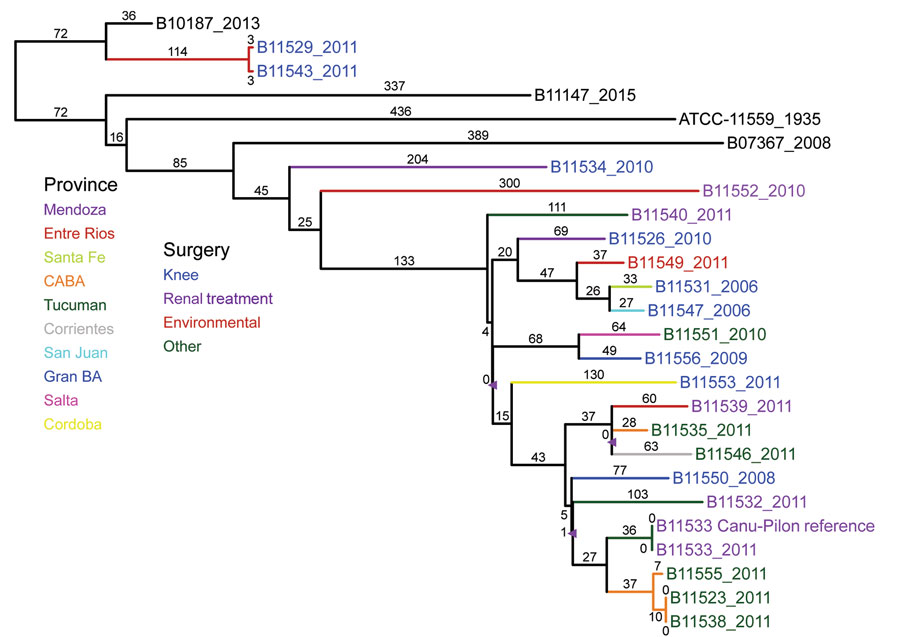Rhizopus microsporus Infections Associated with Surgical Procedures, Argentina, 2006–2014
Jolene R. Bowers

, Juan Monroy-Nieto, Lalitha Gade, Jason Travis, Nicolás Refojo, Ruben Abrantes, Jorge Santander, Chris French, María Cecilia Dignani, Alejandra Ines Hevia, Chandler C. Roe, Darrin Lemmer, Shawn R. Lockhart, Tom Chiller, Anastasia P. Litvintseva, Liliana Clara, and David M. Engelthaler
Author affiliations: Translational Genomics Research Institute, Flagstaff, Arizona, USA (J.R. Bowers, J. Monroy-Nieto, J. Travis, C. French, D. Lemmer, D.M. Engelthaler); Centers for Disease Control and Prevention, Atlanta, Georgia, USA (L. Gade, S.R. Lockhart, T. Chiller, A.P. Litvintseva); Departamento Micología, Instituto Nacional de Enfermedades Infecciosas “Dr. Carlos G. Malbrán,” Buenos Aires, Argentina (N. Refojo, R. Abrantes, A.I. Hevia); Asociación Argentina de Artroscopía, Buenos Aires (J. Santander, M.C. Dignani); Pathogen and Microbiome Institute, Flagstaff (C.C. Roe); Infection Committee of the Italian Hospital of Buenos Aires, Buenos Aires (L. Clara)
Main Article
Figure

Figure. Maximum parsimony phylogenetic analysis, including 100 bootstrap statistical replicates, and epidemiologic data for Rhizopus microsporus var. rhizopodiformis, including 21 isolates from Argentina, 2006–2014; 3 control isolates (in black); and the public genome of American Type Culture Collection 11559, highlighting a lack of solid evidence for a common source for the surgical infections. Branch colors denote the province; isolate name colors denote the surgery type. The single-nucleotide polymorphism–based comparison covered 21.3 Mbp (99% of the 21.5 Mbp of the unduplicated reference genome of B11533). The consistency index is 0.99 out of 1.00, indicating a low level of potential homoplasy in the dataset. The 3 tree nodes with <90% bootstrap statistical support are marked with a triangle.
Main Article
Page created: April 16, 2020
Page updated: April 16, 2020
Page reviewed: April 16, 2020
The conclusions, findings, and opinions expressed by authors contributing to this journal do not necessarily reflect the official position of the U.S. Department of Health and Human Services, the Public Health Service, the Centers for Disease Control and Prevention, or the authors' affiliated institutions. Use of trade names is for identification only and does not imply endorsement by any of the groups named above.
